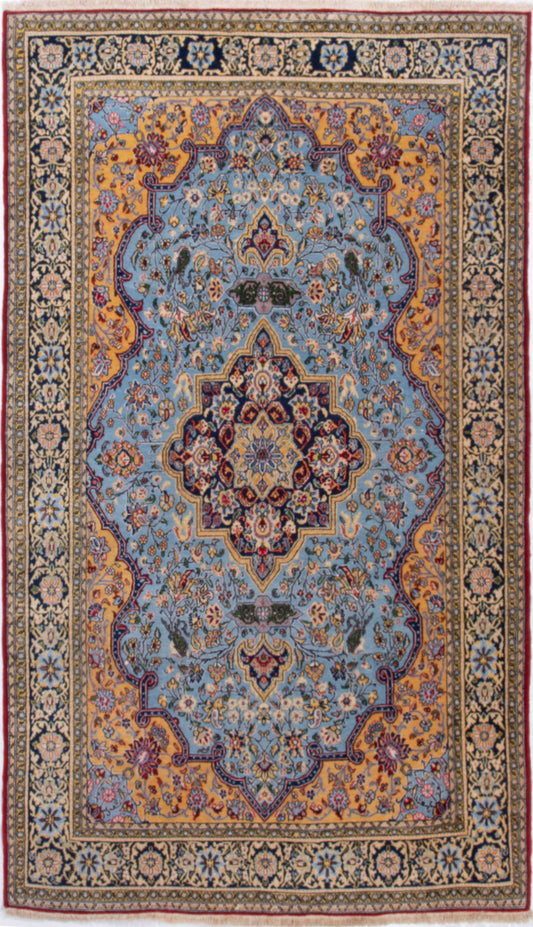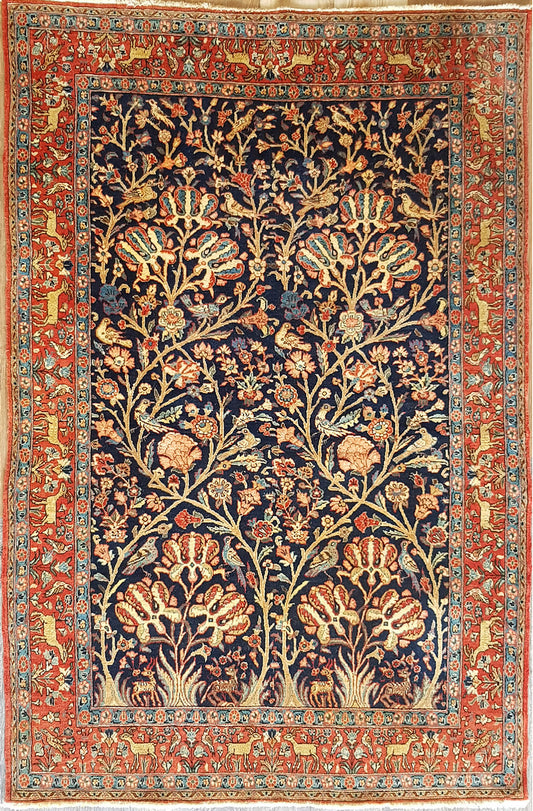Shahreza Rug History & Origin Guide
History of Shahreza
Shahreza, formerly known as Shahreza, is nestled in the Isfahan Province of central Iran. It's a region steeped in rich history, extending back to the time of the Medes and Achaemenid Empires. As a historical hub, it has seen the rise and fall of many empires and witnessed significant cultural shifts throughout the centuries.
History of Rugs Made in Shahreza
Shahreza's rug-making history is a captivating tale. The weaving craft reached its zenith during the Safavid Empire in the 16th century. Rug making was elevated to a form of art, with intricate designs narrating the stories of rulers, invasions, and the region's cultural identity. Despite invasions and political unrest, rug weaving persisted, becoming an integral part of Shahreza's identity and economy.
Types of Shahreza Rug Designs
Shahreza rugs are renowned for their unique design style. A typical Shahreza rug showcases geometric motifs with dominant central medallions. Some common designs include the Harshang or Crab design and floral patterns, displaying an intricate balance of traditional Persian motifs and unique local elements.
Colours Used in Shahreza Rugs
The colour palette of Shahreza rugs is a delightful mix of earthy and vibrant hues. Reds, blues, and creams dominate, reflecting the surrounding landscape's beauty. The dyes used are often natural, made from local plants and minerals, providing longevity and vibrancy to the rugs.
Materials Used in Shahreza Rugs
Traditionally, Shahreza rugs are made from high-quality wool sourced from local sheep. Cotton is also used, primarily for the rug's foundation, whilst the more luxurious rugs feature silk detailing, adding a sophisticated touch.
Knotting Details of Shahreza Rugs
Shahreza rugs are known for their dense and fine knotting. The rugs often feature a high knots per square inch (KPSI) count, ranging from 120 to 840, indicating high quality and intricate detail.Motifs and Patterns
Motifs and patterns in Shahreza rugs exhibit a captivating blend of traditional Persian symbolism and local cultural expressions. Common motifs include floral patterns, palmettes, and scrolling vine networks.
Famous Weavers from Shahreza
While no specific weavers have garnered international fame, Shahreza is known for its community of skilled artisans who have passed down their weaving knowledge through generations.
Demographics and Information about Shahreza
Shahreza is located in the centre of Iran and is home to a population of roughly 100,000 people. Its demographic comprises primarily of Persians, and the main language spoken is Persian.
Nearby Rug-Producing Areas
Isfahan, Kashan, and Qum are notable nearby rug-producing regions, each having their unique rug styles and designs.Climate and Weather
Shahreza experiences a semi-arid climate with hot summers and cold winters, typical of central Iran.
Best Time to Visit Shahreza
The best time to visit Shahreza is during the spring (March to May) or autumn (September to November), when the weather is more pleasant.
Top Tourist Destinations in Shahreza
Apart from its famous rug markets, Shahreza offers historical sites like the 14th-century Jame Mosque and ancient Fire Temples.
Cultural or Artistic Events in Shahreza
The most significant event in Shahreza is the annual rug fair, where local weavers showcase and sell their creations. It's an opportunity for enthusiasts to learn about the intricate process of rug-making.
Other Pertinent Details Specific to Shahreza
Shahreza's rug industry is not only a significant contributor to its economy but also a cultural pillar, keeping the town's rich history alive. Investing in a Shahreza rug means owning a piece of this history, a testament to its artisans' skill and passion.
Buying a Shahreza Rug
When purchasing a Shahreza rug, keep in mind a few essential aspects:
Quality: The density of knots is a reliable indicator of a rug’s quality. A higher knots per square inch (KPSI) count denotes better quality.
Authenticity: True Shahreza rugs are handmade. Be wary of machine-made imitations that might not offer the same durability or value.
Material: Genuine Shahreza rugs are typically made of wool, with cotton foundations. Some higher-end versions incorporate silk.
Price: The price of a Shahreza rug can vary based on its age, condition, material, and size. An authentic, high-quality Shahreza rug is an investment that will appreciate over time.
Dealer: Purchase from a reputable dealer who can provide a guarantee of authenticity.
Preserving Shahreza Rugs
A Shahreza rug, like any handmade rug, requires careful maintenance to preserve its beauty:
Cleaning: Regular vacuuming can keep a Shahreza rug clean. For deeper cleaning, professional rug cleaners are recommended, as they know how to handle the rug’s delicate natural fibres.
Rotation: Rotate the rug every six months to prevent uneven wear.
Repair: If the rug gets damaged, seek expert help. An experienced repairer can restore the rug’s original condition without damaging it.
Whether you’re a rug enthusiast or someone who appreciates ha
ndcrafted art, a Shahreza rug is a worthwhile addition to any collection. These rugs serve as a testament to the rich history, vibrant culture, and impeccable craftsmanship of Shahreza's weavers. By owning one, you’re not just investing in a beautiful rug but also helping to preserve an important aspect of Persian heritage.
Browse Our Current Selection of Shahreza Rugs
-
Persian Shahreza Rug
Regular price £1,795.00Regular priceUnit price / per -
Semi-Antique Persian Shahreza Rug
Regular price £2,975.00Regular priceUnit price / per


